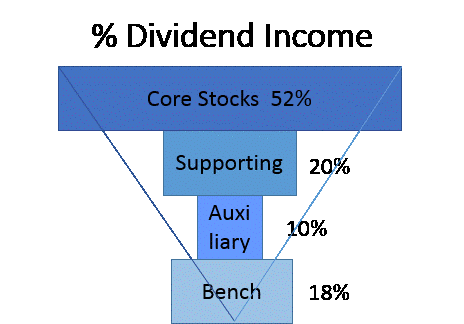The 3 Best Dividend Stocks for 2014 (DEO PM TGT)
Post on: 26 Октябрь, 2015 No Comment

Purchasing the very best dividend stocks can make investing seem pretty easy. Buy-and-hold investors simply let shares sit in their accounts, allow the dividends to accumulate with time, and have a fortune waiting for them when retirement time comes around. That’s why we’d like every investor to consider owning the best dividend stocks in 2014.
But there’s a caveat to the list. The beginning of the new year represents a convenient, but completely arbitrary, time to look for good stocks. There’s nothing inherent about any of these picks that makes 2014 The year for them. Instead, current prospects make these companies look like great long-term candidates.
For example, I could say that Apple — with its 2.3% dividend, low payout ratio, and reasonable P/E ratio — is an excellent candidate for 2014. But because the company’s long-term advantages are by no means sustainable — it’s hard for any technology company to claim this — the company’s stock is not going to be included here.
Therefore, I’m not necessarily saying the three stocks below will be the best dividend stocks in 2014 alone, so much as that they’ll be solid picks over the next three to five years.
Now, some people aren’t comfortable investing in sin stocks, while others don’t mind. No matter your stance, it’s impossible to deny the strength of Philip Morris’ brands — including Marlboro, the best-selling brand of cigarettes worldwide.
Beyond brand recognition, Philip Morris also offers two long-term advantages for investors. First, the company offers exposure to emerging economies. This is especially true when it comes to Asia, where sales have grown by 12.5% per year since 2010. And second, because Philip Morris only conducts business abroad, it isn’t subject to the negative public sentiment toward smoking that has pervaded the U.S. over the past decade.
The company’s 4.4% yield is nothing to scoff at, but what’s really important is that Philip Morris only uses 68% of its free cash flow to pay out its dividends. That means it should be able to continue its payout if times get tight, and can gradually increase its dividend over time through the pricing power that its brands offer.
It’s no secret that retail has been a brutal business since the Great Recession. Bricks-and-mortar stores have suffered as customers begin using the Internet more and more for everyday purchases. But some companies have thrived: Target has been able to grow revenue by 4% per year since 2009.
That might sound puny, but compare it to Target’s much bigger rival Wal-Mart ( NYSE: WMT ). which accomplished the same feat over the same time frame. Unlike Wal-Mart, however, Target seems to have a more enduring business model moving forward: it has become clear that Wal-Mart workers are simply tired of being treated like third-rate citizens, taking to the picket line to prove their point. Even though they’re actually paid less. Target employees seem to be much happier with their station. Over the long run, this can make a big difference.
And when it comes to the company’s dividend, there’s a lot to like at Target. Its 2.7% yield is higher than Wal-Mart’s, and Target uses less free cash flow — 33% — to pay its dividend than Wal-Mart. That means that Target has more room for dividend growth over time.

Last on our list is another sin stock, Diageo, the Britain-based maker of everything from Johnnie Walker whiskey to Smirnoff vodka and Guinness beer. Like Philip Morris, this company benefits from both strong brands and international appeal. Take a look at how sales are spread across the globe, and keep in mind that emerging economies — which represent a smaller piece of the pie, represent significant growth opportunities.
Source: SEC filings. Represents fiscal 2013 sales.
Because Diageo is a foreign entity, its dividend payout policy is different from what American investors are accustomed to. Instead of regular, preset payouts, Diageo takes a look at its free cash flow situation every year, and determines the appropriate dividend accordingly. Last year, roughly 88% of free cash flow was used to pay dividends. The dividend will rise and fall with the strength of the business. That said, today’ 3% yield is a great starting point.
More Dividend Ideas for 2014














